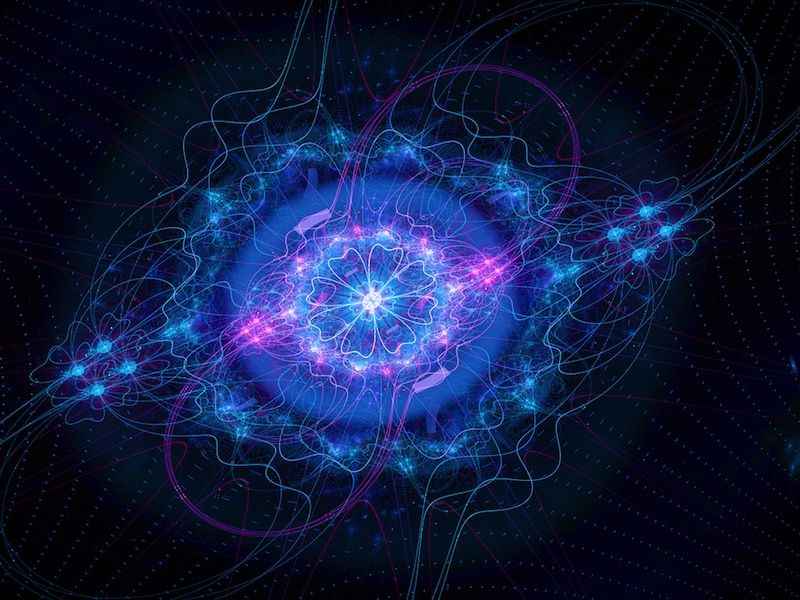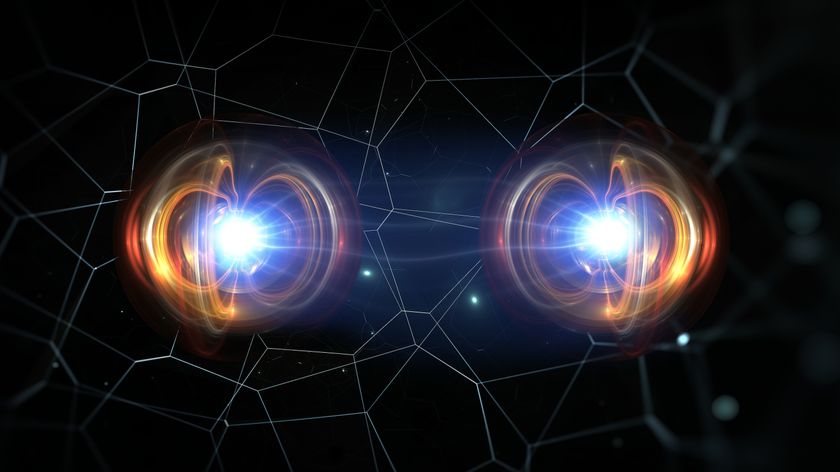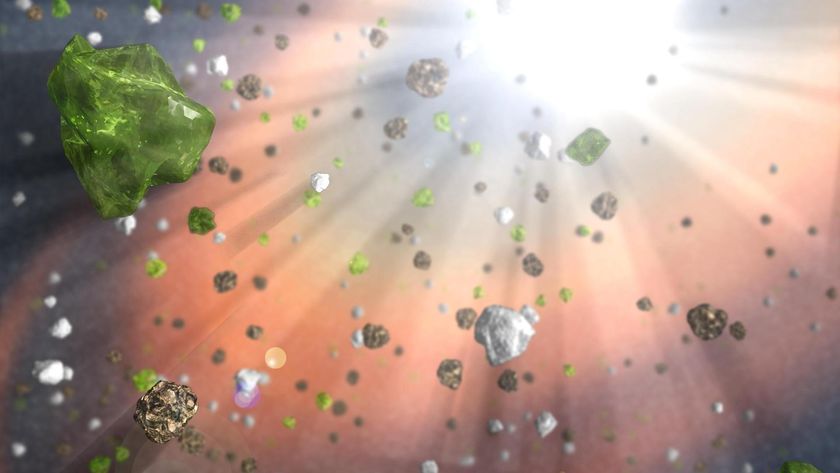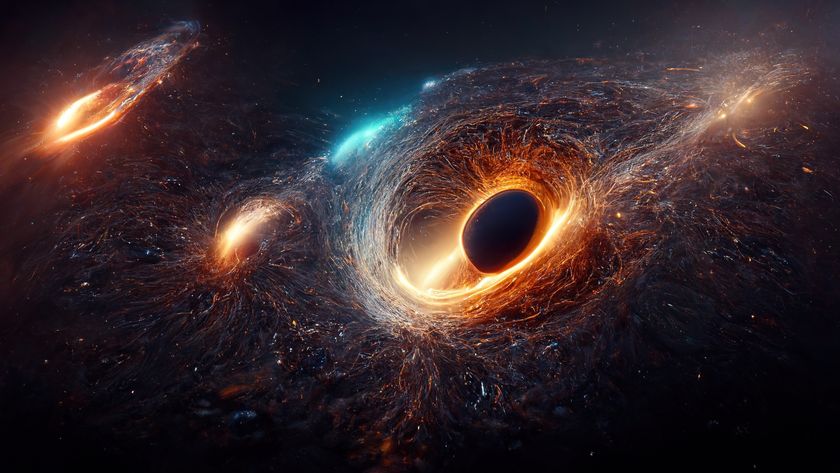
An extremely rare collision of massive subatomic particles could reveal the nuts and bolts of how the subatomic particles called Higgs bosons impart mass to other particles.
The Higgs boson particle, which was detected for the first time in 2012, is essentially tossed around like a ball between two force-carrying particles known as W-bosons when they scatter, or bounce off of one another, a new data analysis revealed.
The data comes from the ATLAS experiment, the same proton-collision experiment that revealed the Higgs boson, at the Large Hadron Collider (LHC), a 17-mille-long (27 kilometers) underground atom smasher on the border of Switzerland and France.
By studying how much the Higgs sticks to the W-bosons during this scattering process, the team could learn new details about how strongly the elusive Higgs boson interacts with the field that gives all particles their mass.
"We are basically observing the Higgs boson at work to see whether it does its job the way we expect it to," said study co-author Marc-André Pleier, a physicist with the ATLAS project, and a researcher at Brookhaven National Laboratory in Upton, New York. [Beyond Higgs: 5 Elusive Particles That May Lurk in the Universe]
Higgs Field
For decades, the Standard Model, the reigning physics theory that describes the menagerie of subatomic particles, was both astonishingly predictive and obviously incomplete.
Sign up for the Live Science daily newsletter now
Get the world’s most fascinating discoveries delivered straight to your inbox.
The long-sought missing piece of the Standard Model was the Higgs boson, a particle proposed by English physicist Peter Higgs and others in 1964 to explain how certain particles get their mass. The theory held that particles like W-bosons pick up mass as they travel through a field, now known as the Higgs field. The more particles "drag" through the field, the more massive they are. If the Higgs field did exist, then by extension another particle, the now-famous Higgs boson (dubbed "the God Particle," a nickname scientists dislike), should also exist as a vibration of that field when other subatomic particles interact with the field.
In 2012, scientists announced they had found the Higgs boson. In the years since, physicists have been busy analyzing data from collisions at the LHC to figure out exactly how the Higgs boson does its job of giving particles mass.
Impossible physics
Other parts of the Standard Model didn't add up without the Higgs boson. For instance, in theory proton collisions could produce pairs of W-bosons that would then scatter, or bounce off of, one another. (W-bosons mediate the weak nuclear force, which governs radioactive decay and fuels the chemical reactions at the hearts of stars, Pleier said.)
At high-enough collision energies, however, the theory predicted that W-boson scattering would occur more than 100 percent of the time, which is physically impossible, Pleier said.
So physicists proposed a subatomic game of catch, where a Higgs boson could bounce off one W-boson in a colliding pair, and be absorbed by the other member of the pair, Pleier said.
The extra Higgs, in essence, fixed the mathematical glitch in the theory.
But W-boson scattering was incredibly rare: It occurs only once in 100 trillion proton-proton collisions, so scientists never had a chance to test their theory, Pleier said.
"It's even rarer to observe than the Higgs boson," Pleier told Live Science.
Higgs at work
While poring over data from the ATLAS experiment, researchers saw, for the first time, glimpses of elusive W-boson scattering, Pleier said.
So far, the team has seen hints of just 34 W-boson scattering events, which showed that the Higgs boson does play some role in this scattering process.
But there is still too little data to say exactly how "sticky" the Higgs boson is to these W-bosons, which would reveal how sticky the Higgs field is. That, in turn, could help reveal more details about how the Higgs field gives other particles their mass, Pleier said.
If follow-up data reveals that the Higgs Boson doesn't seem to be sticky enough, that's an indication that other subatomic particles may be involved in W-boson scattering, he said.
When the LHC ramps up again in 2015 at higher energies, the team should be able to produce 150 times more data than they were collecting when the atom smasher shut down in 2013, which could help flesh out the now-shadowy picture of the Higgs boson in action.
The findings have been accepted for publication in the journal Physical Review Letters and were published in the preprint journal arXiv.
Follow Tia Ghose on Twitter and Google+. Follow Live Science @livescience, Facebook & Google+. Original article on Live Science.

Tia is the managing editor and was previously a senior writer for Live Science. Her work has appeared in Scientific American, Wired.com and other outlets. She holds a master's degree in bioengineering from the University of Washington, a graduate certificate in science writing from UC Santa Cruz and a bachelor's degree in mechanical engineering from the University of Texas at Austin. Tia was part of a team at the Milwaukee Journal Sentinel that published the Empty Cradles series on preterm births, which won multiple awards, including the 2012 Casey Medal for Meritorious Journalism.


